Introduction to Mitsuboshi Colors
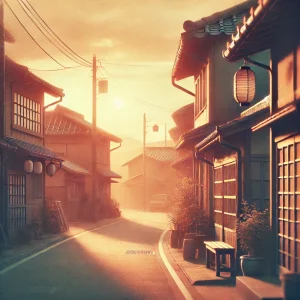
Let me tell you about a delightful little anime called Mitsuboshi Colors. Imagine a peaceful town in Japan where three young girls—Yui, Sacchan, and Kotoha—have taken it upon themselves to protect their community. Sounds fun, right? Well, that’s exactly what this series is all about. Mitsuboshi Colors follows the adventures of these three spirited elementary school girls, who form a club called the "Colors." Their mission? To keep their town safe and solve any “mysteries” that come their way. The setting is Asakusa, a charming district in Tokyo, and it plays a huge role in the story, almost like a character in itself.
Now, you might think this is just another slice-of-life anime, but Mitsuboshi Colors has a unique charm that makes it stand out. The show captures the innocence and imagination of childhood in a way that feels genuine and heartwarming. It’s the kind of anime that makes you smile because it’s so lighthearted and pure. Each episode is filled with small adventures—some as simple as finding a lost cat or catching a thief (who might just be the local policeman playing along).
What really pulls you in is the chemistry between the three main characters. Yui is the sweet and caring leader, Sacchan is the wild and energetic one, and Kotoha is the cool, video game-loving girl who often brings a dose of reality to their fantasies. Their personalities balance each other perfectly, creating a dynamic that’s both hilarious and endearing. Plus, the way they interact with the adults in the town adds another layer of humor and warmth to the show.
But here’s the thing—Mitsuboshi Colors isn’t just for kids. Sure, it’s got all the elements that appeal to a younger audience: colorful visuals, simple stories, and lots of playful fun. But it also resonates with older viewers who can appreciate the nostalgia and the clever humor woven into each episode. It’s a show that reminds you of what it was like to be a kid, when even the smallest things could become grand adventures.
So, whether you’re looking for something to watch with your kids, or you just want to unwind with a feel-good anime, Mitsuboshi Colors is definitely worth your time. Trust me, these three little “heroes” will win you over with their antics, and before you know it, you’ll be rooting for the Colors as they take on the world—or at least their small corner of it.
Plot Overview and Episode Highlights
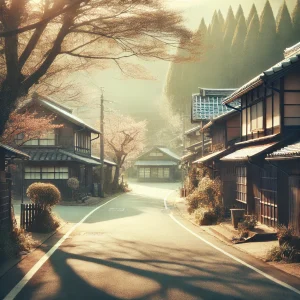
So, what’s the deal with Mitsuboshi Colors? Well, at its heart, the series is about three elementary school girls—Yui, Sacchan, and Kotoha—who’ve formed a club called the “Colors.” Their mission? To protect their beloved town, Asakusa, from all kinds of "dangers," real or imagined. But here’s the thing: the show doesn’t follow a single, overarching plot. Instead, it’s all about the small, everyday adventures these girls embark on.
Each episode of Mitsuboshi Colors is like a little treasure chest of fun. One day, they might be on the hunt for a mysterious "thief" (who’s actually their friendly local cop, Saito, playing along), and on another day, they’re solving the puzzle of a missing cat. The beauty of the show lies in how these simple plots are brought to life through the girls’ vivid imaginations. For them, even the most mundane activities—like visiting the zoo or exploring a local festival—become grand quests filled with excitement and intrigue.
Now, let’s talk about some of the key episodes that really capture the essence of the series. One standout moment is when the Colors take on the challenge of a “haunted” house. Of course, in typical Mitsuboshi Colors fashion, the haunted house is nothing more than a friendly neighborhood prank. But watching the girls muster up the courage to face their fears, all while keeping their bond strong, is what makes this episode so memorable.
Another highlight? The episode where they decide to run a “detective agency.” With their homemade badges and over-the-top seriousness, they tackle a series of “cases” that include finding lost items and uncovering “secrets” around town. It’s hilarious to see how deeply they get involved in their roles, and it’s moments like these that really show off the charm and humor of the series.
But what makes Mitsuboshi Colors truly special is its episodic nature. Unlike shows with complex story arcs, this anime thrives on simplicity. Each episode stands on its own, offering a new adventure that doesn’t require any previous knowledge. This makes it incredibly accessible—you can jump in at any point and still enjoy the ride. And because the episodes are so self-contained, they focus entirely on the girls’ interactions and the unique, sometimes absurd situations they find themselves in.
It’s also worth mentioning how each adventure, no matter how trivial it may seem, contributes to the overall narrative by deepening the bond between Yui, Sacchan, and Kotoha. You can see how their friendship evolves through these experiences, making their antics all the more endearing. Plus, the show’s lighthearted tone and episodic format make it the perfect escape for anyone looking for something easygoing and fun.
Character Profiles
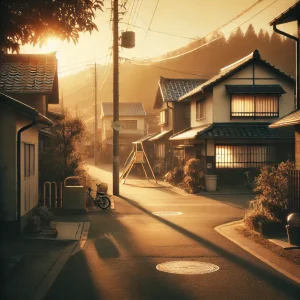
Let’s get to know the trio that makes Mitsuboshi Colors so special: Yui, Sacchan, and Kotoha. These three girls aren’t just the heart of the series—they’re the ones who bring all the fun and mischief to life.
First up, we have Yui Akamatsu. Yui is the leader of the Colors, and you can tell she takes her role seriously. She’s the type of girl who always tries to do the right thing, and her sense of responsibility is what often keeps the group on track. But don’t let that fool you—Yui has her quirky side too. She’s got a kind heart and a love for animals, which sometimes leads her into some pretty funny situations. What makes Yui stand out is her ability to balance her leadership with a childlike innocence. She’s the glue that holds the group together, and the others often look to her when they need direction.
Next, there’s Sacchan, or Sat-chan as she’s affectionately known. If Yui is the calm, collected one, Sacchan is the exact opposite. She’s the wild card of the group, always full of energy and ideas that can be, well, a bit over the top. Sacchan’s enthusiasm is infectious—she’s the one who usually drags the other two into whatever adventure or scheme is happening that day. Her loud, boisterous nature can sometimes lead to trouble, but it’s all part of her charm. You can’t help but smile at Sacchan’s antics, even when they’re a bit reckless. She brings a lot of the comedy to the show, and her dynamic with the other two is a big part of what makes Mitsuboshi Colors so entertaining.
And finally, we have Kotoha. Now, Kotoha is an interesting one—she’s the brains of the operation, with a love for video games and all things logical. While Yui is leading and Sacchan is running wild, Kotoha is the one who often thinks things through, sometimes with a bit of sarcasm or dry humor. She’s got a sharp wit, and her deadpan delivery can be hilarious, especially when she’s pointing out the flaws in Sacchan’s latest crazy idea. But don’t get the wrong idea—Kotoha isn’t just a voice of reason. She’s just as involved in their adventures as the others, and she adds a layer of depth to the group with her unique perspective.
What makes the Colors so captivating is how these three very different personalities mesh together. Yui’s kindness, Sacchan’s energy, and Kotoha’s cleverness create a perfect balance, making each of their adventures feel fresh and dynamic. They might bicker and tease each other, but at the end of the day, their friendship is rock solid. You can see how much they care for each other, and that’s what makes their little club so special. It’s this blend of personalities that really drives the series and keeps you coming back for more.
Themes and Motifs
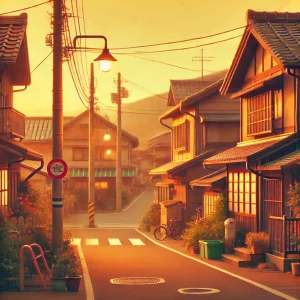
Let’s dive into the heart of Mitsuboshi Colors by exploring its central themes and motifs. This anime isn’t just a lighthearted series about three girls having fun—there’s a lot more going on beneath the surface.
At the core of Mitsuboshi Colors is the theme of friendship. Yui, Sacchan, and Kotoha share a bond that’s both simple and profound. Their friendship is built on trust, loyalty, and a shared love for adventure. What’s beautiful about this show is how it captures the essence of childhood friendships, where every moment spent together feels like an adventure in itself. Whether they’re solving “mysteries” or just hanging out in their secret hideout, the warmth and sincerity of their relationship shines through. You can see that they genuinely care for each other, even when they’re teasing or bickering. This portrayal of friendship is both nostalgic and comforting, reminding us of the friends we had when we were their age.
Another significant theme is innocence. The world of Mitsuboshi Colors is seen through the eyes of these young girls, and it’s a world filled with wonder and imagination. The show does an excellent job of preserving the purity of childhood, where the lines between reality and fantasy are often blurred. For Yui, Sacchan, and Kotoha, a simple walk through the park can turn into a mission to save the town, and a friendly encounter with a police officer can feel like a confrontation with a “villain.” This innocence isn’t just endearing—it’s also a poignant reminder of how children perceive the world around them, finding magic in the mundane.
The joys of childhood are another recurring motif. Mitsuboshi Colors is essentially a celebration of the little moments that make childhood special. The girls’ adventures, no matter how trivial they might seem to an adult, are portrayed with such enthusiasm and joy that it’s impossible not to get caught up in their excitement. Whether they’re catching bugs, playing games, or just sitting and chatting, the show highlights how even the smallest experiences can be filled with happiness when you’re a child. It’s a lighthearted portrayal that brings a smile to your face and reminds you of a time when life was simple and carefree.
But Mitsuboshi Colors isn’t just about fun and games—it also subtly touches on deeper meanings and cultural references. The setting in Asakusa, a district known for its historical and cultural significance, adds a layer of depth to the series. The girls’ adventures often take place against the backdrop of traditional Japanese festivals, temples, and local customs, which not only enriches the story but also introduces viewers to aspects of Japanese culture. There’s a gentle nostalgia woven into the narrative, especially for Japanese viewers, who might see echoes of their own childhoods in these scenes.
What’s also interesting is how the show subtly comments on the passage of time. The girls are at an age where everything feels new and exciting, but there’s also an underlying awareness that this phase of life is fleeting. The show’s episodic nature, where each adventure is self-contained, mirrors the way childhood memories are often experienced— as individual moments that stand out in our minds. This makes Mitsuboshi Colors not just a fun watch, but also a reflection on the fleeting nature of youth and the importance of cherishing those moments while they last.
Reception and Impact
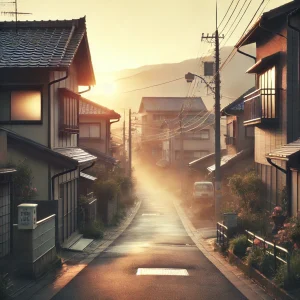
Let’s talk about how Mitsuboshi Colors was received both in Japan and abroad, and what kind of impact it’s had on the anime world.
When Mitsuboshi Colors first aired in Japan, it was met with a warm reception, especially among fans of the slice-of-life genre. People quickly fell in love with the trio of Yui, Sacchan, and Kotoha, and their innocent yet adventurous escapades around Asakusa. The show didn’t try to be something it wasn’t—there were no grand story arcs or dramatic twists, just pure, simple fun. And that’s exactly what made it stand out. Japanese audiences appreciated its nostalgic charm and how it captured the essence of childhood. The familiar setting of Asakusa, combined with the girls’ playful imagination, struck a chord with viewers who enjoyed the blend of reality and fantasy.
Internationally, Mitsuboshi Colors found a niche audience, particularly among those who are already fans of laid-back, character-driven anime. While it didn’t reach the mainstream success of some larger titles, it garnered a dedicated fanbase who appreciated its lighthearted and wholesome content. The show’s episodic format made it easy for international viewers to jump in at any point without needing to follow a complex storyline, which is a big plus for casual anime watchers. Reviews from Western anime critics often highlighted the show’s charm, with many noting how it successfully brought to life the small adventures of childhood in a way that feels genuine and heartwarming.
In terms of popularity, Mitsuboshi Colors may not have reached blockbuster status, but it has carved out its own little corner in the anime community. The fanbase, while not massive, is incredibly loyal. Fans often express their love for the series through fan art, online discussions, and even pilgrimages to the real-life locations in Asakusa where the anime is set. The show’s unique appeal lies in its ability to transport viewers back to a simpler time, which resonates with both young and older audiences alike.
Critically, Mitsuboshi Colors was praised for its storytelling, character dynamics, and the way it encapsulates the slice-of-life genre. Although it didn’t rack up major awards, it was recognized in various anime communities for its unique approach to the genre. It’s the kind of show that doesn’t need flashy action scenes or intense drama to leave an impression. Instead, its strength lies in its subtlety and the genuine emotions it evokes.
Speaking of impact, Mitsuboshi Colors has certainly left its mark on the slice-of-life genre. While it might not have redefined the genre, it reaffirmed the value of simple, heartfelt storytelling. In a landscape filled with high-stakes plots and complex character arcs, Mitsuboshi Colors stands as a reminder that sometimes, the most ordinary stories can be the most extraordinary. It’s the kind of anime that other creators look to when they want to capture that pure, unfiltered sense of joy and wonder that comes with being a kid.
The legacy of Mitsuboshi Colors might be quiet, but it’s lasting. It’s a series that fans will remember fondly, not for its grandeur, but for its sincerity. And in the world of anime, that’s something truly special.
